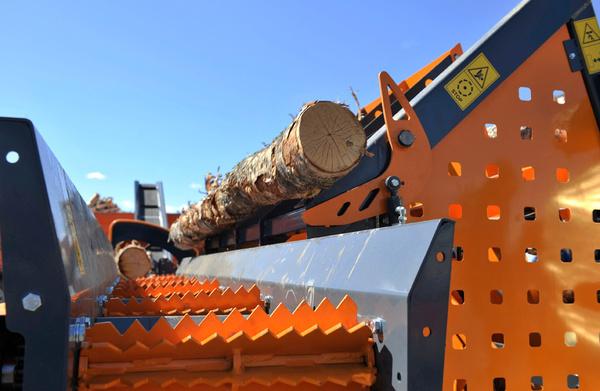Understanding loose cubic meter
The concept of a loose cubic meter is integral to industries dealing with bulk materials such as firewood, sand, and gravel. Essentially, a loose cubic meter refers to the volume occupied by material when it is piled loosely, without any compression or order. This form of measurement is particularly useful in understanding how much space a material occupies in a natural, unstructured state. For example, when dealing with klapi or polttopuu, a loose cubic meter will include the air gaps naturally present between pieces of wood when they are dumped into a pile.
In the context of firewood, measuring in loose cubic meters can be advantageous for both suppliers and consumers. It provides a realistic expectation of how much volume the firewood will occupy when stored in an informal manner, which is often the case in everyday settings. This measurement is also extensively used in other industries such as construction, where materials like sand and gravel are often transported and stored in unstructured piles.
Defining stacked cubic meter
A stacked cubic meter, in contrast, refers to the volume of material when it is neatly arranged and compacted. This measurement method ensures that the pieces are aligned closely, minimizing air gaps and maximizing density. When measuring firewood using stacked cubic meters, the wood is typically organized in a systematic manner, such as in a cord or a carefully arranged stack.
The key difference between loose and stacked cubic meters lies in the density and compactness of the material. A stacked cubic meter will contain more material by weight compared to a loose cubic meter, due to the reduced air space and increased organization. This method is often preferred when precise volume measurements are required, such as in commercial transactions or when storage space is at a premium.
Comparing measurement methods
Understanding the distinctions between these volume measurement methods is crucial for making informed decisions in various industrial contexts. Loose cubic meters are typically used when the natural, unstructured volume of a material is of interest, offering a more relaxed and general estimate. This might be ideal for rough transportation or initial storage assessments.
On the other hand, stacked cubic meters provide a more exact measurement, crucial for precise inventory management, pricing, and quality control. Factors such as the type of material, its intended use, and the required precision level will influence which measurement method is most suitable. For instance, in the sale of firewood, knowing the difference can help both buyers and sellers negotiate fair prices based on the true volume of wood being exchanged.
Applications in industry
Both loose and stacked cubic meters find extensive applications across various industries, including forestry, construction, and logistics. In forestry, understanding the volume of wood in both loose and stacked forms can influence decisions related to harvesting, transportation, and sales. Accurate firewood measurement ensures efficient resource utilization and cost management.
In construction, these measurements play a critical role in estimating the quantity of materials like sand and gravel required for a project. Similarly, logistics companies employ these methods to optimize space usage in transport vehicles, ensuring maximum efficiency and cost-effectiveness. By employing the appropriate measurement technique, businesses can significantly enhance operational efficiency and reduce waste.
Choosing the right measurement for your needs
Deciding whether to use a loose or stacked cubic meter measurement depends on several factors, including the specific needs of a project and the characteristics of the material. For instance, if the priority is to understand the actual storage volume of a material in its natural state, a loose cubic meter measurement is more appropriate. However, when precision is critical, such as in commercial transactions or when limited storage space is available, a stacked cubic meter provides a more accurate assessment.
To make informed decisions, consider the end goal—whether it’s a rough estimate or precise calculation. Also, think about the handling and storage conditions. For buyers and sellers of bulk materials, understanding these differences can lead to better negotiations and more accurate pricing.
Conclusion
In summary, understanding the differences between loose and stacked cubic meters is essential for effectively managing bulk materials across various industries. Loose cubic meters offer a more general volume estimate, while stacked cubic meters provide precision and density. Choosing the right measurement method can significantly enhance operational efficiency and accuracy.
At Reikälevy, we specialize in providing high-quality machinery under the SAMI brand, designed to meet the specific needs of modern farms and industries. Our expertise in volume measurement and material handling ensures that our clients receive the most efficient, cost-effective solutions. For those interested in maximizing their operational efficiency, we invite you to explore our product range online or contact us for more information.

